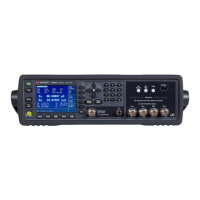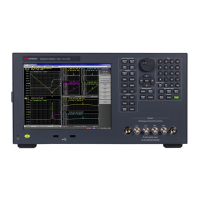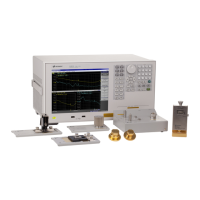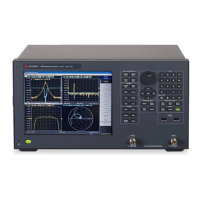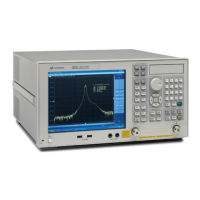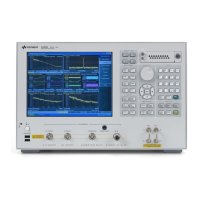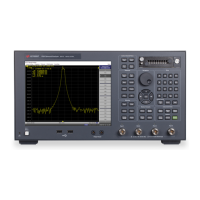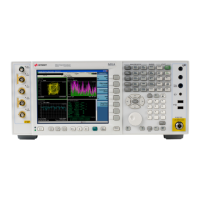Keysight E4981A 120 Hz/1 kHz/1 MHz Capacitance Meter 119
Executing Measurement
Tips for Increasing Measurement Speed (Throughput)
Using frequency shift
When two or more E4981As are integrated into a single system, you can shift
the 1 MHz measurement frequency (by +1%, –1%, 0%, –2%, or +2%) to avoid
interference between the measurement signals. You can specify the amount of
shift the signal frequency actually applies to the DUT relative to 1 MHz as a
percentage of 1 MHz. If the specified value is out of allowable setup range, the
maximum value or minimum value is set.
For setup procedure, refer to “Setting Up Frequency Shift” on page 61.
Tips for Increasing Measurement Speed (Throughput)
You can use the following methods to increase the measurement speed.
Setting measurement time to 1
Set the measurement time to 1, which provides a shorter measurement time.
For the setup procedure, refer to “Selecting Measurement Time” on page 58.
Setting measurement range mode to the fixed range
If you set the measurement range mode to the auto range, the measurement
time is lengthened because a ranging time is required. Therefore, specify the
fixed range for quicker measurements.
For the setup procedure, refer to “Selecting Measurement Range” on page 56.
Turning OFF display
Turning OFF display can shorten the measurement computation time (EOM).
The display time is shown in “Measurement time” on page 188.
For the procedure to turn ON/OFF the measurement result display, refer to
“Turning ON/OFF display” on page 62.
Decreasing averaging count
If you use the averaging function, set the averaging count to as small a value
as possible.
For the setup procedure, refer to “Setting Up Averaging Count” on page 59.
Setting the trigger delay time to 0
If you do not need to use the trigger delay function, confirm that the trigger
delay time is set to 0.
For the setup procedure, refer to “Setting Up Trigger Delay Time” on page 59.

